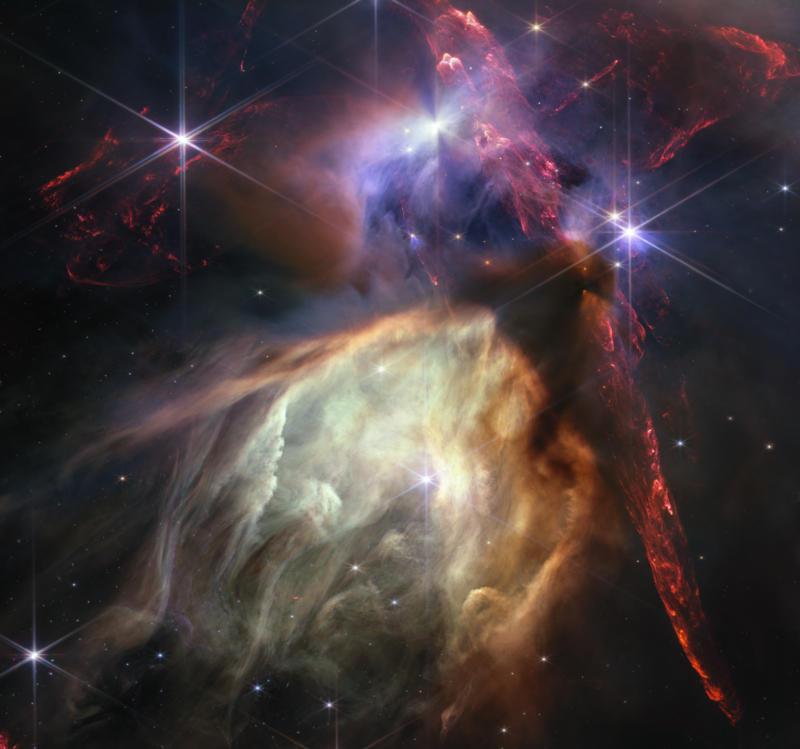
To commemorate the first year of scientific operations by the James Webb Space Telescope, NASA has released a stunning new image of a stellar nursery.
The photo is gorgeous. It could easily hang in a museum, as if it were a large canvas painting produced by a collaboration of impressionistic and modern artists. But it is very real, showcasing the process of stars being born a mere 390 light years from Earth. This is the Rho Ophiuchi cloud complex, the closest star-forming region to Earth.
Given the nursery's proximity and Webb's unparalleled scientific instruments, we have never had this kind of crystal-clear view of these processes before. The detail revealed in this image of about 50 stars is truly remarkable, a distillation of all that Webb has delivered over the last 12 months and all that it promises to do over the next 10 or 20 years.
This is a revelatory view of our own distant past. Our own star and Solar System formed a little more than 4.5 billion years ago, when a molecular cloud collapsed into what became our Sun. As the Sun formed, it did so with a large disk of leftover material about it, spinning. Over time, the material in this disk coalesced into the planets, large gas giants like Jupiter and smaller rocky worlds like our own Earth. This set into play the chess board for the emergence of life on our world a few hundred million years later.
Now, billions of years on, humanity has developed civilization, science, and the technology to finally look outward with enough precision to see this very process happening across the vast distances of the heavens. With the James Webb Space Telescope, we are observing the very formation of brand-new stars and the protoplanetary discs all over again.
Talk about the circle of life. It is here. It is there. It is everywhere.
There are some fascinating details in the colours of this photograph. Many of the stars in this image are similarly sized to the Sun. However, the center of the image is dominated by a larger star, S1, surrounded by lighter clouds of gas. This is a star that has carved a bubble in these clouds by emitting energetic ultraviolet photons, a figurative candle in the darkness.
Farther away from this star and its cavity, there are orange-ish clouds. According to the Webb telescope's astronomers, these are organic compounds known as polycyclic aromatic hydrocarbons. These carbon-rich compounds are possibly an essential part of the genesis of life, although scientists are unsure of this. But we are likely observing not just new star systems but the building blocks of life.
Another striking feature of the photo shows large, red bands of material running nearly vertically down the right-hand side and across its top. This is a proto-stellar outflow and appears darkly red due to the presence of molecular hydrogen colliding with interstellar gas.
"Webb’s image of Rho Ophiuchi allows us to witness a very brief period in the stellar life cycle with new clarity," said Klaus Pontoppidan, who served as Webb project scientist at the Space Telescope Science Institute in Baltimore, Maryland. "Our own Sun experienced a phase like this, long ago, and now we have the technology to see the beginning of another's star’s story."
It is a beautiful story to behold.



3175x175(CURRENT).thumb.jpg.b05acc060982b36f5891ba728e6d953c.jpg)

Recommended Comments
There are no comments to display.
Join the conversation
You can post now and register later. If you have an account, sign in now to post with your account.
Note: Your post will require moderator approval before it will be visible.